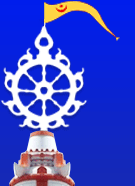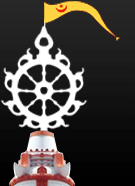LIVING TRADITION >> Daily Rituals
The daily and periodical rituals observed and performed in His service and worship since time immemorial, bear the dignity and grandeur which a supreme person is entitled to.
The ritual system of the temple is very elaborate and complex involving a multitude of functionaries. The rituals of Lord Shree Jagannatha can broadly be divided into three categories i.e. the daily, the occasional (periodical) and the festive. In Shree Jagannatha temple, these rituals assure the term “Niti”. The fixed nitis that are observed daily are a matter of routine. Each Sevaka or Servitor of the temple has his specific role to play in these nitis with terms and times already specified. The various nitis, that are observed daily in the temple commence at about 5 am and continue till late night. The following is a brief account of the daily rituals of Lord Shree Jagannatha.
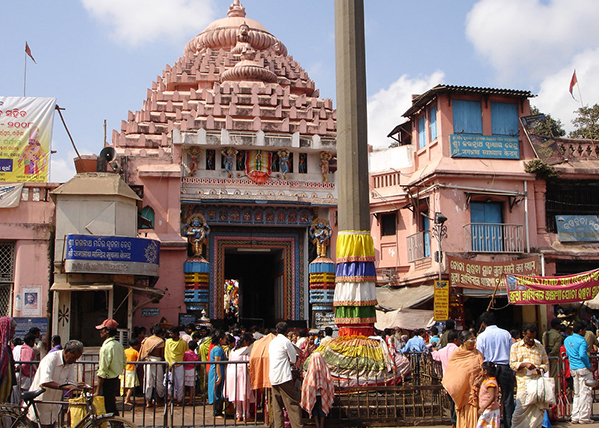
Dwaraphita (opening of the doors)
The first niti or ritual begins in the early morning with the opening of the doors of the Temple. The doors of the sanctum are to be opened by 4.30 A.M in the morning, as stated in the Record of Rights of the temple; in-presence of five sevakas (servitors) as is necessary for performance of ‘Dwaraphita’ niti. They are Bhitarchha Mahapatra, Pratihari, Muduli, Akhanda Mekap and Palia Mekap. The doors are opened after Bhitarchha Mahapatra examines the seal, placed on the padlocks on the previous night by another sevaka known as Talichha Mahapatra. If the seal is intact, he breaks it, unlocks the padlock and opens the door. In the same way the door of the inner sanctuary (Kalahat dwara) is also opened.
Mangala Alati (Auspicious lamp offering)
The subsequent ritual after Dwaraphita is Mangala Alati at 5.30 A.M Bhitarchha Mahapatra and two other palia Puspalaka sevakas perform Mangala Alati, standing below the pedestal (Ratnasinghashan). There are three type of Alati known as “Karpura alati”, “Bati alati” and “Pithau alati”.
Mailam (removal of dress, floral decoration etc.)
The scheduled time for Mailam is 6 A.M. Mailam or removal of dress and floral decoration etc. performed after Mangal Alati. The clothing’s & floral decoration of the deities from the previous right is removed and Tadap & Uttariya (a kind of cotton cloth) is supplied to make the deities ready for the succeeding niti of Abakas i.e. cleaning of teeth & bathing etc.
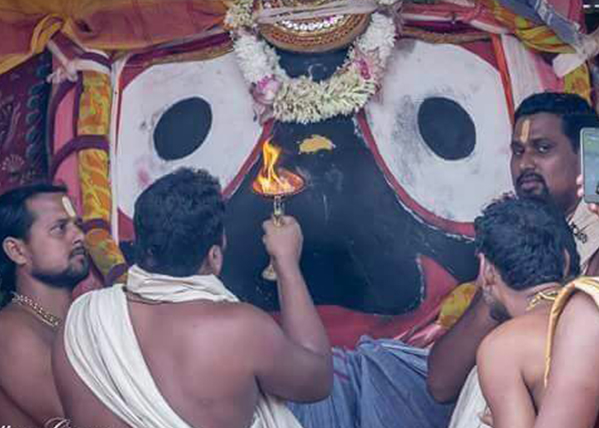
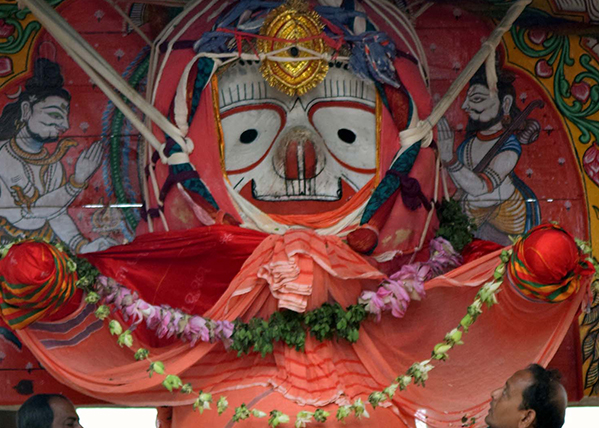
Abakasha
The time specified is 6.30 A.M. These rituals are performed by Bhitarchha, palia Puspalakas, Suarbadu, Paniapata, Mukhapakhala, Pratihari, Ghatuary, Bhandar Mekap, Mahabhoi and Khuri Nayak (Astrologer). The sevakas clean the teeth of deities by sitting in front of the brass mirrors in which the images are reflected and then bathe them by sprinkling water mixed with camphor, curd, amla, sandal paste & scented flowers on the three mirrors. During Abakash ritual, the temple astrologer (Jyotisha) reads out the tithi and other astrological details of the day in front of Abakash Puja. This puja is performed with Pancha Upachara.
Mailam, Beshalagi
After the bathing rituals have been completed, the Deities change their clothes and wear another set of clothes with floral ornaments and garlands etc. The sevakas associated with this ritual are Puspalaka, Changada Mekap, Akhanda Mekap, Suarbadu, Khuntia etc.
Rosha Homa (Fire sacrifice in the kitchen)
Rosha homa or fire sacrifice is done in the kitchen before cooking of the Lords food is started. Rosha homa performed by puja panda sevakas.
Surya Puja (Sun worship)
Surya Puja is performed in the inner enclosure near the Muktimandap by a Pujapanda sevaka. The prescribed time is 7.45 A.M.
Dwarapala Puja
Next follows Dwarapala Puja at the Jaya Vijaya gate in the main temple by a Pujapanda sevaka.
Gopal Ballav Bhoga
The prescribed time is 8.30 A.M. This is the time for breakfast of the deities. Gopal Ballav Bhoga consisting of coconut sweets (kora), khua, fauits, sweet popcorn (khai), ripe banana, curd and chipped-coconut, green coconut etc are offered to the deities by way of early breakfast. The offerings are made at a place called Anasara Pindi (known as Ballava Pindi) the place between the Kalahat door and the first wooden door. Three palia Pujapanda sevakas perform the puja in ‘Pancha Upachara bidhi’.
Sakala Dhupa (morning food offering)
The most important niti is Sakala Dhupa or Raj Bhoga served at 9 A.M to 10 A.M in which various preparations of black gram like Kanti, Enduri, Jhilli, Mathapuli, Hansakeli, Ada pachedi, saga, Bhaja, Khechedi, Kanika etc are offered to the deities. The Pujapandas perform the puja of the Bhoga with 16 (sixteen) ‘Upacharas’. Rice, wheat, ghee, sugar cane, fuel, earthern pots, vegetables etc are supplied for the cooking purpose by the temple administration. The Pujapanda who worships Shree Jagannatha also worships SreeDevi, Bhubevi, Sudarsana and Madhaba. After bhoga puja offering of lamps to the Deities is made.
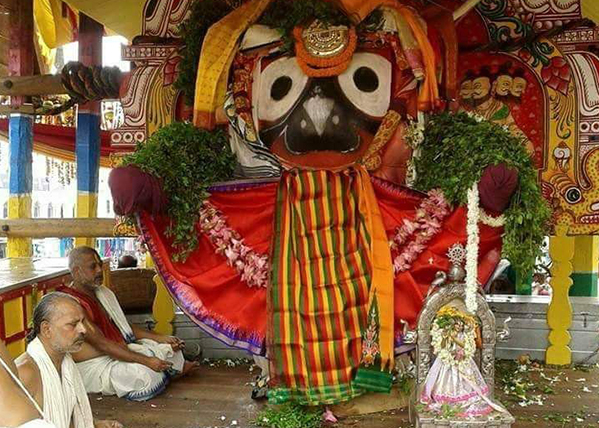
Mailama
After morning dhupa puja, the deities change their clothes. The palia Pushpalaka put up new dress materials with silken clothes & floral ornaments etc.
Bhoga Mandap
The prescribed time is 11.30 A.M. Bhoga Mandap Puja takes place in Bhoga Mandap hall a place behind the Garuda pillar of Natamandap. Pujapandas offer this bhoga with Pancha Upacharas. It is traditionally done in order to facilitate the pilgrims, the various mathas and institutions, private individuals as well as the Suaras (temple cooks) who sell Mahaprasad to offer Anna bhoga in larger quantities. This bhoga is mainly prepared to meet the requirement of general public and other institutions.
Madhyahna (midday) Dhupa
Like Sakala Dhupa, this puja is also performed with sixteen Upacharas in the afternoon. Madhyahna dhupa bhog is offered in the sanctum sanctorum (near Ratnasinghashan). The bhoga times are more in number such as cooked rice, curries, sweets, cakes of different kinds are offered in this dhupa. The Pujapandas and other servitors, as in the morning dhupa are engaged in this ritual. Lamp offering is also made after the bhog.
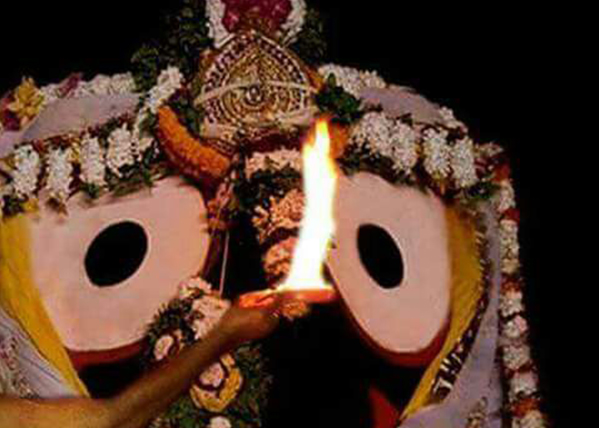
Sandhya Alati
The prescribed time is 6 P.M. In the evening again sacred lamps are offered to the deities. If there is no afternoon Pahuda, this lamp offering takes place after Madhyahna Dhupa and after change of cloth, garland etc.
Sandhya Dhupa
After “Sandhya Alati” again Raj bhoga (Sandhya Dhupa) is offered to the Deities in the same manner as Sakala and Madhyahna Dhupa. The time for Sandhya Dhupa is between 6.30 P.M. to 8 P.M. During Dhupa ritual camphor alati is offered to the Deities. Besides these two more alaties are offered which known as “Jaya Mangal Alati’. The bhoga items are mostly watered rice, cakes like puli and amalu etc.
Mailam and Chandanalagi
After completion of Sandhya Dhupa, the deities change their clothes and are anointed with sandal paste mixed with camphor and keshar. The Puspalaka sevakas do this function.
Badasinghara Besha
The prescribed time is between 9 P.M. to 10 P.M. After Chandan lagi, the deities are dressed in Baralagi Patta (some portions of Geeta Govinda of Jayadev are worn into the texture of these silken robes), flower crests, garlands, Tulsi (holy basil), Dayana etc in the late night, which is known as Badasinghara Besha. Palia Puspalakas decorate the Lord with various types of floral ornaments. This besha is very attractive to look at.
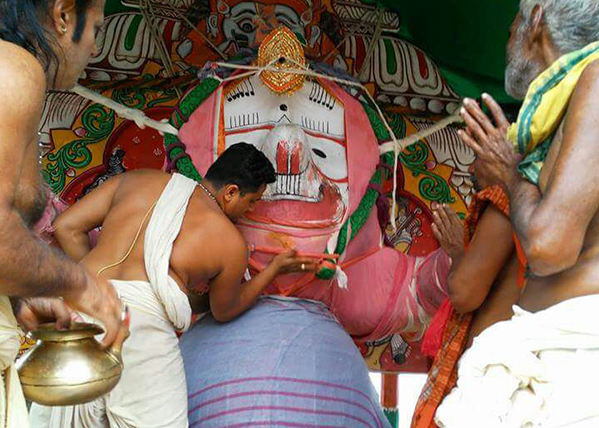
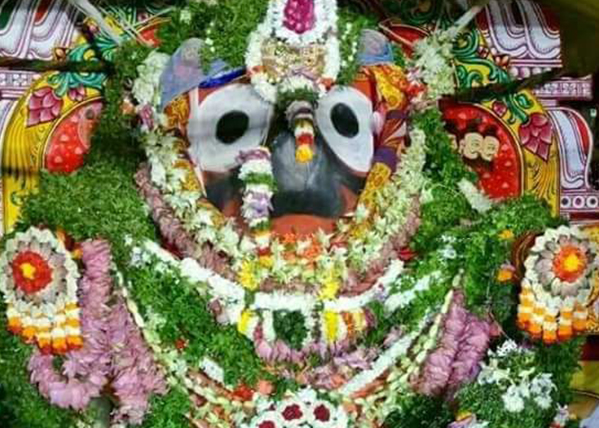
Badasinghara Dhupa
The time for this dhupa is between 10.30 P.M to 11 P.M. This is the last bhoga in which Pakhala (watered rice), Kadalibada, Khiri, Kanjc etc are offered to the deities. The Pujapandas worship the deities with ‘Pancha Upacharas’ sitting on the floor down the Ratnasinghashan.
Khataseja Lagi & Pahuda
The last rituals are Khata seja lagi, Pusparjali, Pahuda, Muda and Sodha. The time is 11.30 in the night. The “Sayan Thakura” is carried from Bhandar ghar to Ratnavedi and placed near Lord Shree Jagannatha. The bedsteads of the deities are arranged. Then follows offering of green coconut, betels and camphor alati and then the deities retire to their beds. The doors like Kalahat, Jaya Vijaya and Beherana (south side) are then sealed by Talichha Mahapatra. All persons excepting those sevaks and temple staff required to watch the temple are cleared out of the temple precincts.
There are 85 to 90 sevakas are engaged in daily rituals of the Deities. It is generally not possible to follow the time prescribed for each ritual on account of certain practical difficulties. On specific festive days, additional rituals are performed. As a result, changes in timing and attractions in the routine rituals are made.


